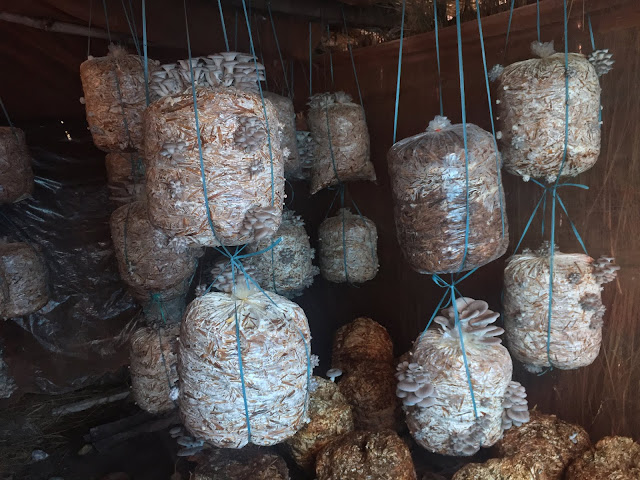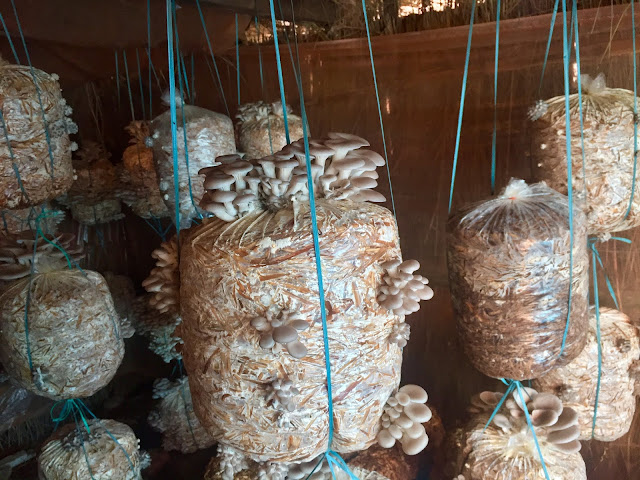Edible mushrooms are the fleshy and edible fruit bodies of several species of macro fungi which bear fruiting structures that are large enough to be seen with the naked eyes. Mushrooms are low in calories, fat-free, cholesterol-free and very low in sodium, yet they provide important nutrients, including selenium, antioxidant mineral, calcium, riboflavin, niacin, vitamin D, copper, potassium, protein, iron and phosphorous.They can appear either below ground or above ground where they may be picked by hand. In the vegetable kingdom the mushroom is ranked with the heterotrophic organisms (lower plants). In contrast to the higher, green plants, these heterotrophic are not capable of photosynthesis. Edibility may be defined by criteria that include absence of poisonous effects on humans and desirable taste and aroma.
Some of the types of edible mushrooms are:
- Cremini Mushrooms. Cremini mushrooms are a variety of fungus that belongs to the white button mushroom family.
- Morel Mushrooms.
- Shiitake Mushrooms.
- Oyster Mushrooms.
- Lion's Mane Mushrooms.
- Enoki Mushrooms.
- Button Mushrooms.
- Portobello Mushrooms.
“In Nepal, mushroom cultivation began in 1976. Nowadays it is a fast growing business due to its high profit. Farmers can get output within one month from 'pleurotus' cultivation. Nepal is also a country where mushroom can be cultivated throughout the year under natural environmental conditions
Nutritional value of mushrooms
Mushrooms contain an extra amount of vitamins B2 and B3. These vitamins take care of the metabolism and the release of energy from carbohydrates, proteins and fats. Vitamin B2 is also necessary for a healthy skin. Folic acid is necessary for growth and the production of blood. It is one of the few vitamins of which, on average, we take in too little from our food. Potassium is necessary for a healthy blood pressure and for muscle and nerve activity. Phosphorous takes care of healthy bones and teeth and of energy metabolism. Copper is necessary for your immune system, nerves and for the synthesis of body cells. All these nutritional values occur in high concentrations in mushrooms.
Important things about mushroom production
Mushrooms grow on compost. The compost is produced at farms. From the moment the raw materials are mixed, up to finished or fully grown mushroom. The process takes three to four weeks, depends depending on the raw materials and the system used at the Compost yard.
Preparation of fresh compost
Depending on the raw materials this phase takes a minimum of 3 up to even 7 days. The most important objectives in this phase are:
- Mixing the straw or horse manure (this can replace the straw to a large extent) chicken manure, gypsum and water, so that the compost becomes homogeneous;
- Opening up the straw (Straw is an agricultural byproduct consisting of the dry stalks of cereal plants after the grain and chaff have been removed), so that the straw absorbs water and the mushroom fungus, the mycelium, can grow in the straw.












![[Latest] Best WhatsApp Dare Games (2019)](https://blogger.googleusercontent.com/img/b/R29vZ2xl/AVvXsEhrUxzyAlXw3C_UPtGkqRf5JWrdJMxTWdmjvEYlTfdOAdhANPJ0jAUYbwCHtwH7yKCR8EclV3uedOPgNWMLQ_9mXvZtwqfb9TxRizNRjQ78vdvt1USpSTP5tELiDszo6T1lSm22uwq1pHTh/s72-c/aaa.png)






No comments:
Post a Comment